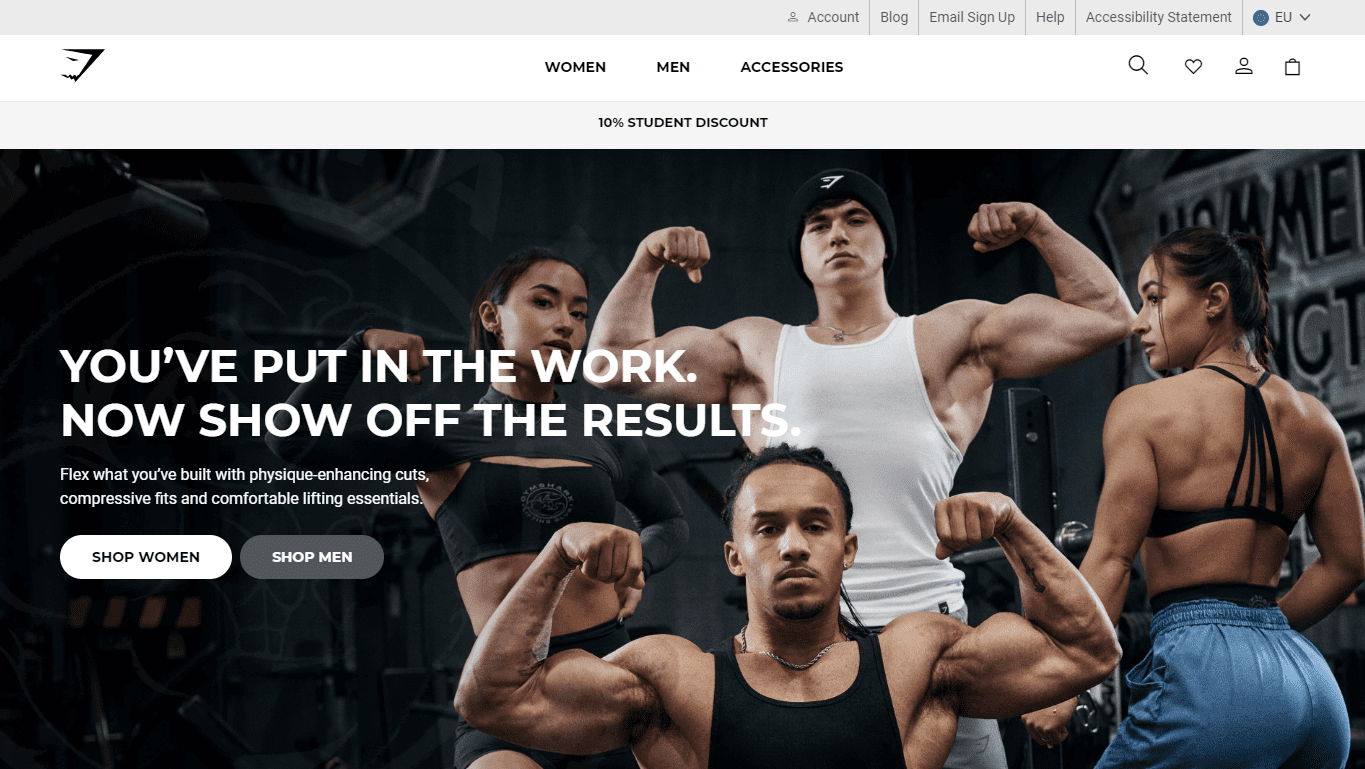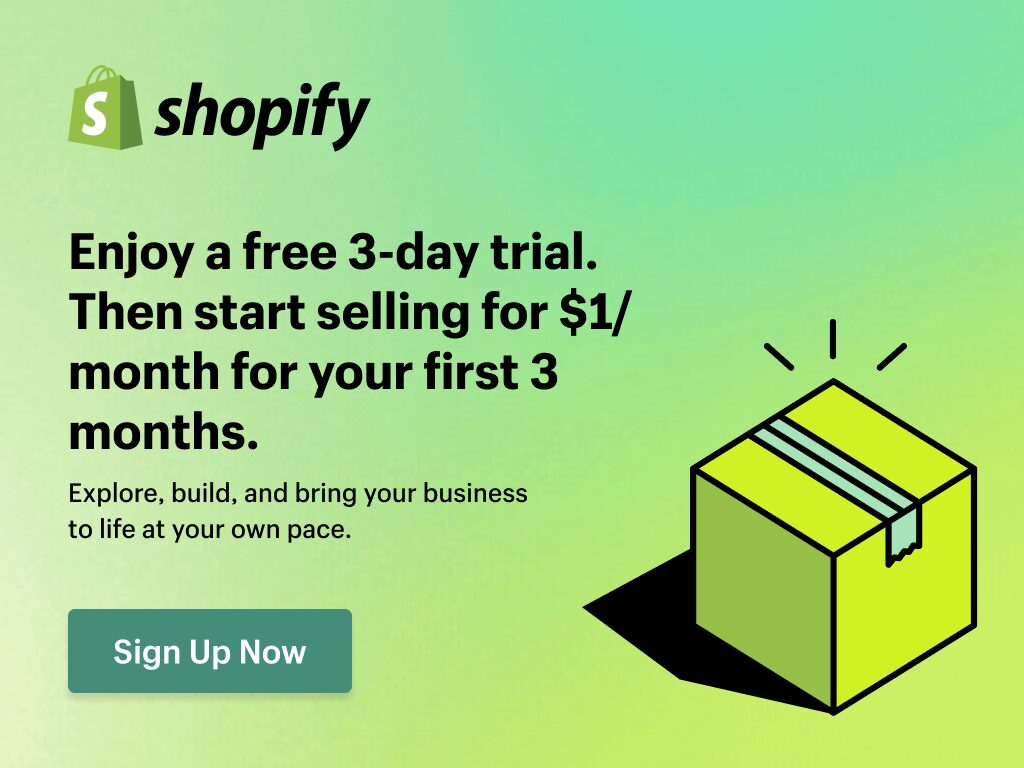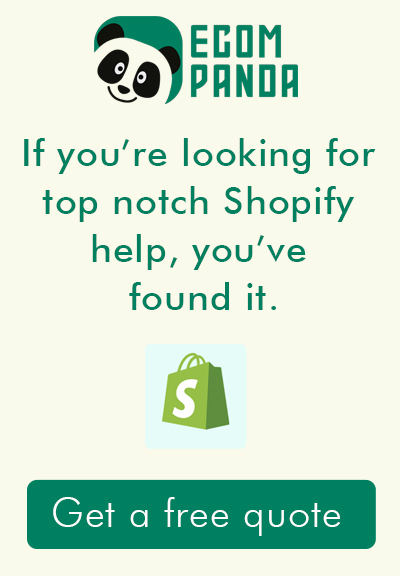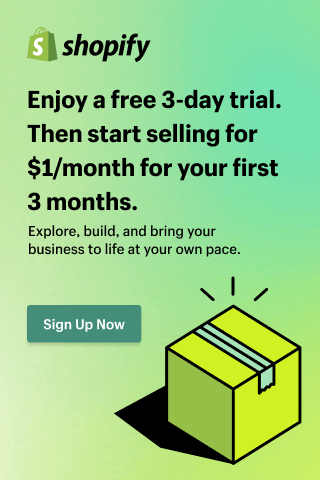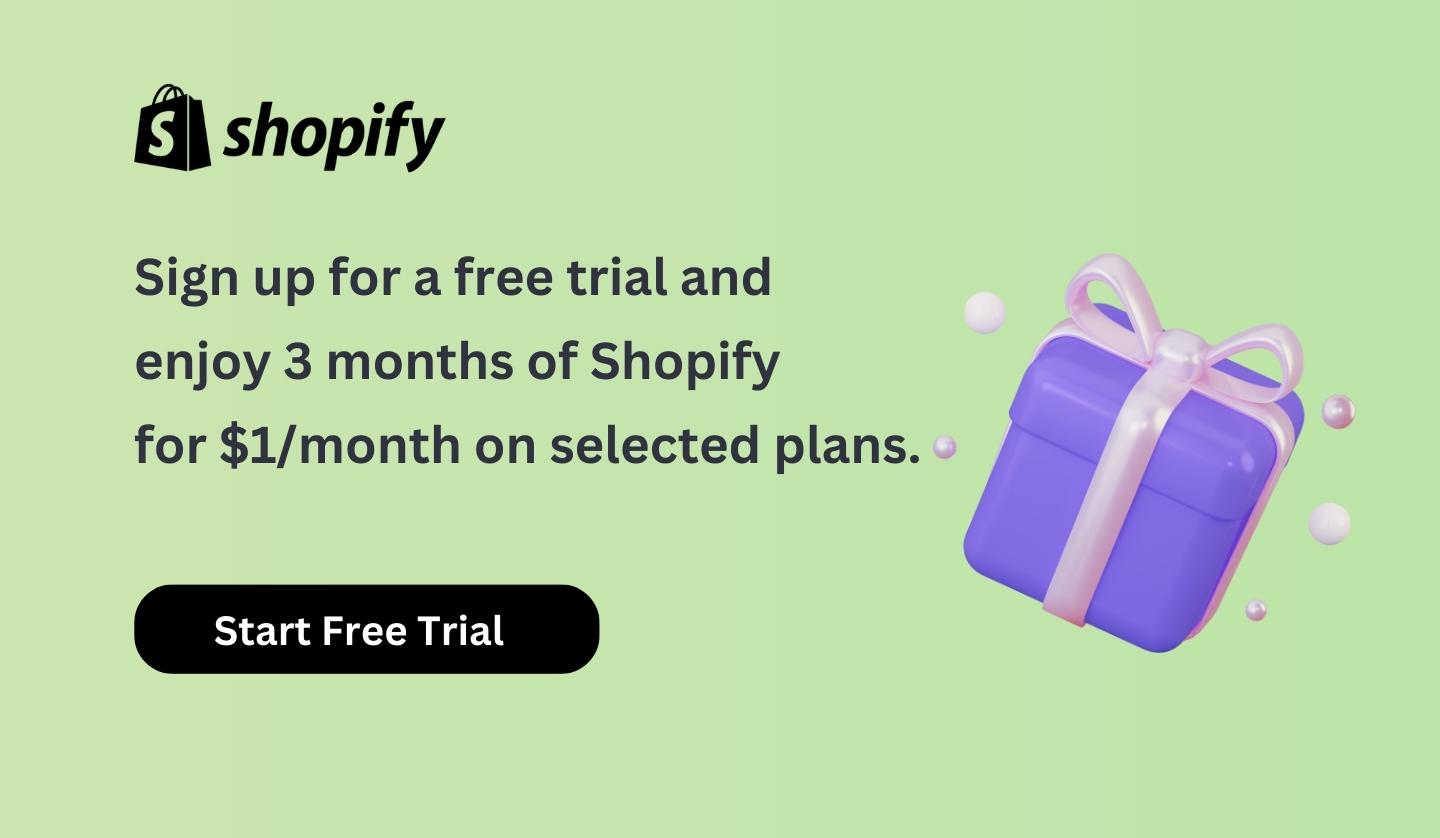Introduction
In the ever-evolving digital marketplace, the key to e-commerce success lies in capturing your potential customers’ attention from the first point of contact. A high-converting Shopify landing page plays a pivotal role in this process. This specialized webpage serves as the stepping stone for your customers’ buying journey, designed to engage visitors and guide them towards making a purchase or taking a desired action.
A high-converting Shopify landing page doesn’t merely serve as an aesthetic facade. It goes beyond creating a visually appealing representation of your products or services. Instead, it focuses on communicating your brand value effectively, fostering trust, and prompting the desired customer response – in most cases, a purchase.
Well-structured Shopify landing pages are not just important; they’re crucial to the success of any online business. They serve as the focal point where customer interest is converted into action. The landing page’s role is to clearly communicate the value of the product or service, present an enticing offer, and facilitate a smooth conversion process. This could mean subscribing to a newsletter, making a purchase, downloading a digital product, or any other desired action.
In essence, a well-structured Shopify landing page can make the difference between a visitor simply browsing through your site and a visitor making a purchase, thereby driving conversions and contributing significantly to your e-commerce success. This ultimate guide aims to help you understand and harness the power of a high-converting Shopify landing page to its fullest.
Table of Contents
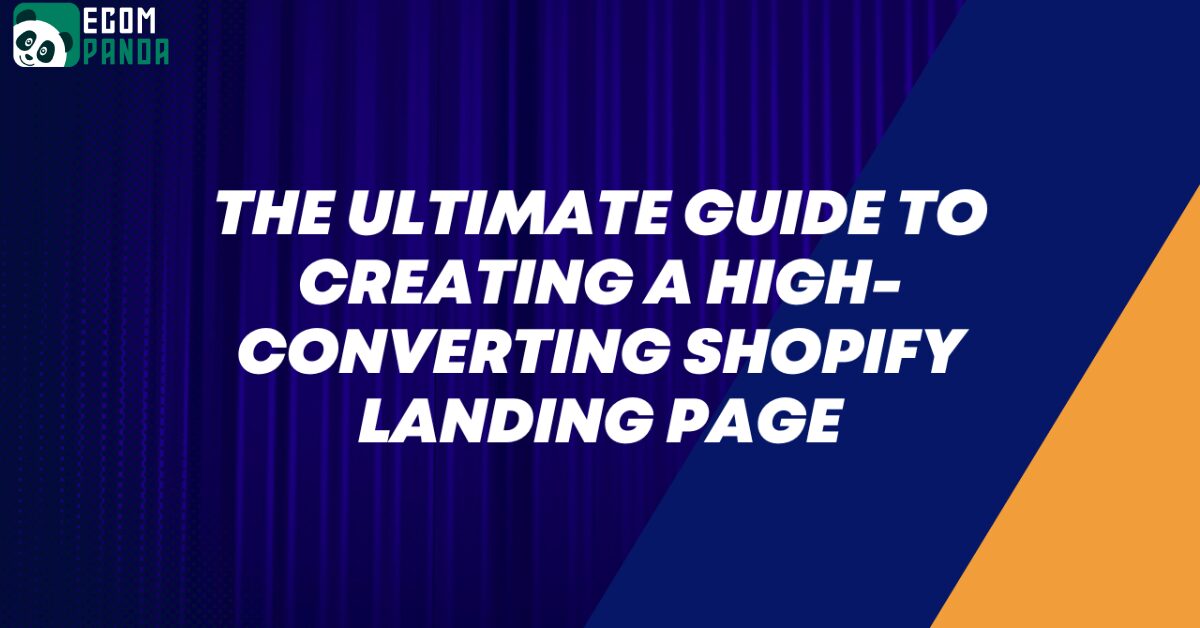
Understanding the Basics of a Shopify Landing Page
What is a Shopify Landing Page?
A Shopify landing page is a standalone web page on your Shopify store where you direct your potential customers with the intention to convert them into actual customers. This conversion could mean making a purchase, signing up for a newsletter, downloading a digital resource, or any other desired action. The landing page is typically linked from marketing campaigns such as email newsletters, social media posts, or online ads.
Unlike general website pages, a Shopify landing page is highly specific and purpose-driven. It focuses on a single product, offer, or campaign, free of site-wide navigation elements. The design, content, and calls-to-action on a Shopify landing page are all geared towards guiding your potential customers towards a single conversion goal.
Why is a Shopify Landing Page Essential for Your eCommerce Business?
A Shopify landing page is a critical element in the marketing strategy of any eCommerce business for several reasons:
- Focused Conversion Goal: Each landing page can be tailored to drive a specific conversion action, enhancing the effectiveness of your marketing campaigns.
- Improved User Experience: By providing visitors with specific, targeted content that aligns with their expectations, a Shopify landing page can significantly enhance user experience and satisfaction.
- Higher Conversion Rates: With clear calls-to-action and less distraction, Shopify landing pages typically result in higher conversion rates compared to standard web pages.
- Increased ROI: By boosting conversion rates, a well-optimized Shopify landing page can significantly increase the return on investment for your marketing campaigns.
- Valuable Customer Insights: Shopify landing pages can provide valuable insights into your customers’ behavior, helping you understand what resonates with your audience and what doesn’t.
In conclusion, a well-structured and optimized Shopify landing page is not just a nice-to-have; it’s an indispensable tool for boosting your eCommerce business’s overall performance and profitability.
The Importance of a High-Converting Shopify Landing Page
Effects of a High-Converting Shopify Landing Page on eCommerce Performance
A high-converting Shopify landing page can profoundly impact an eCommerce business’s performance by influencing several key metrics:
- Increase in Conversion Rate: The primary goal of a Shopify landing page is to convert visitors into customers. A well-optimized page can significantly improve your conversion rate, leading to higher sales and revenue.
- Decrease in Bounce Rate: A compelling landing page that aligns with your marketing campaigns can keep visitors engaged, reducing the chance of them leaving without taking any action, otherwise known as “bouncing”.
- Enhanced Customer Trust: A professional and user-friendly landing page can increase customer trust in your brand, leading to repeat business and higher customer lifetime value.
- Improved SEO Ranking: Although landing pages are often designed for paid traffic, an SEO-optimized Shopify landing page can also improve organic search rankings, leading to more traffic and conversions in the long run.
Case Studies Showcasing the Importance of Shopify Landing Pages
Case Study 1: Fashion Nova, a popular online fashion brand, heavily utilizes Shopify landing pages for each of their promotional campaigns. These landing pages highlight specific collections or sales, driving customer focus and leading to higher conversion rates. Their landing page strategies contributed to the brand achieving a 600% revenue growth in just one year.
Case Study 2: Gymshark, a fitness apparel & accessories brand, has leveraged Shopify landing pages to launch new collections. By creating hype through countdown timers and email campaigns leading to these landing pages, they’ve achieved sell-outs within minutes of launching new products.
Case Study 3: Jeffree Star Cosmetics, a renowned makeup brand, uses Shopify landing pages to launch new products, leading to incredible hype and high conversion rates. Their landing page for the “Blood Sugar” palette reportedly crashed their website due to high traffic and quick sell-outs.
These case studies highlight the power of a well-structured and high-converting Shopify landing page in driving business growth and eCommerce success.
Components of a High-Converting Shopify Landing Page
A high-converting Shopify landing page is more than just a visually appealing page; it’s a combination of several essential elements working together towards a single goal – conversion. Here are the key components of a high-converting Shopify landing page and how they contribute to the overall conversion rates.
- Attention-Grabbing Headline: The headline is often the first thing visitors see on your landing page. It needs to be compelling and clearly communicate the value proposition of your product or offer, helping to draw in visitors and encourage them to stay on the page.
- High-Quality Images or Videos: Visual content can have a profound impact on conversion rates. High-quality images or videos of your product can help visitors understand what they’re getting, evoke emotions, and build trust in your brand.
- Detailed Product Description: A detailed and persuasive product description can provide all the information a visitor needs to make a purchase decision. It should highlight the features, benefits, and value of your product, addressing any potential objections a visitor might have.
- Clear Call-to-Action (CTA): The CTA button is where the conversion happens. It should be clear, concise, and stand out on the page, guiding visitors towards the desired action.
- Social Proof: Reviews, testimonials, and case studies can provide social proof, building trust in your product and brand, and encouraging visitors to convert.
- Trust Badges: Trust badges such as secure payment symbols, guarantees, and industry accreditations can help alleviate any security concerns visitors might have, contributing to higher conversion rates.
- Simplified Navigation: Unlike a regular webpage, a landing page should have minimal navigation options to keep visitors focused on the conversion goal.
Each of these components plays a vital role in guiding visitors through the conversion funnel, addressing their questions and objections, and ultimately leading them to the desired action. Together, they create a cohesive and persuasive Shopify landing page that can significantly improve your conversion rates.
Steps to Creating a High-Converting Shopify Landing Page
Creating a Shopify landing page that drives conversions doesn’t have to be complex. Here’s a step-by-step guide, complete with expert tips to ensure maximum conversion rates.
- Define Your Conversion Goal: Before you start building your landing page, you need to define what action you want your visitors to take. This could be making a purchase, signing up for a newsletter, downloading a resource, or anything else that aligns with your marketing objectives.
- Expert Tip: Keep your conversion goal specific and measurable to track your landing page’s performance effectively.
- Identify Your Audience: Knowing your audience helps you create content that speaks directly to their needs, interests, and potential objections.
- Expert Tip: Use market research, customer surveys, and buyer personas to gain a deep understanding of your audience.
- Create a Compelling Headline: The headline should grab the visitor’s attention and clearly communicate the value of your offer.
- Expert Tip: Keep your headline clear, concise, and benefit-driven. A/B test different headlines to find the most effective one.
- Add High-Quality Visuals: Use high-quality images or videos to showcase your product or offer. This not only makes your landing page more appealing but also helps visitors understand your product better.
- Expert Tip: Use authentic images or videos that represent your product realistically. Include multiple angles or a product demonstration if applicable.
- Write a Persuasive Product Description: Highlight the features and benefits of your product, and address any potential objections your visitors might have.
- Expert Tip: Use bullet points to make your product description easy to read. Focus on the benefits your product can provide to the customer, not just its features.
- Incorporate Social Proof: Use reviews, testimonials, case studies, or any other form of social proof to build trust in your product and brand.
- Expert Tip: Display social proof close to your CTA to reinforce the visitor’s decision right before they take action.
- Include a Clear Call-to-Action (CTA): Your CTA should guide visitors towards the conversion action. Make sure it stands out on the page and clearly communicates what the visitor is expected to do.
- Expert Tip: Use a contrasting color for your CTA button and keep the CTA text action-oriented and concise.
- Add Trust Badges: Include secure payment symbols, guarantees, or industry accreditations to alleviate any security concerns visitors might have.
- Expert Tip: Place trust badges near your CTA or payment form to boost confidence at this critical stage.
- Test and Optimize: Finally, use A/B testing to try out different elements on your landing page and optimize based on the results.
- Expert Tip: Test one element at a time to accurately determine what’s driving the change in performance.
Follow these steps and you’ll be well on your way to creating a high-converting Shopify landing page that effectively drives your business goals.
Best Practices for Shopify Landing Page Design
Creating an effective Shopify landing page goes beyond including the necessary components. Here are some best practices to consider during the design process, along with their influence on user experience and conversion rates.
- Keep It Simple: A cluttered landing page can overwhelm visitors and distract them from the conversion goal. Stick to a simple, clean design that prioritizes essential information and makes navigation easy.
- Use High-Quality Visuals: High-resolution, authentic images or videos can enhance the perceived value of your product and give visitors a better understanding of what they’re getting.
- Consistent Branding: Ensure that your landing page aligns with your brand’s color scheme, typography, and overall aesthetic. This not only enhances brand recognition but also builds trust with your visitors.
- Mobile Optimization: With more consumers shopping on mobile devices, your landing page needs to be mobile-friendly. This means fast loading times, easy navigation, and a design that looks good on smaller screens.
- Clear and Concise Copy: Your landing page copy should be clear, concise, and persuasive. Avoid jargon and focus on the benefits your product offers to the customers.
- Visible and Actionable CTA: Your call-to-action should be easy to find and clear about what action the visitor should take. Use contrasting colors and action-oriented language to make it stand out.
- Trust Signals: Incorporate trust signals like reviews, testimonials, and security badges to alleviate any potential concerns and build confidence in your brand.
- Minimal Distractions: Remove any elements that could distract visitors from the conversion goal, such as unnecessary links or excessive information.
- Test and Refine: Always test different versions of your landing page to find out what works best and continuously refine based on your findings.
Following these best practices can significantly improve the user experience on your Shopify landing page. A better user experience can lead to longer page visits, higher engagement, and ultimately, higher conversion rates. Keep in mind that what works best can vary depending on your audience and product, so continuous testing and refinement are key.
Shopify Landing Page Optimization Techniques
Optimizing your Shopify landing page is essential to maximize conversion rates and get the best return on your marketing efforts. Here are some key optimization techniques to consider:
- A/B Testing: Also known as split testing, this involves creating two versions of your landing page with one key difference (like the headline, CTA button color, or image placement) to determine which version performs better. By testing different elements, you can continuously refine your landing page based on actual data from your visitors.
- SEO Optimization: While landing pages are often used for paid traffic, they can also be optimized for organic search. This includes using relevant keywords in your content, optimizing your meta tags and URL, adding alt text to images, and ensuring fast loading times. An SEO-optimized landing page can increase visibility in search engine results and bring in more organic traffic.
- Conversion Rate Optimization (CRO): CRO involves using analytics and user feedback to improve your landing page’s performance. This could mean simplifying the navigation, making the CTA more prominent, adding social proof, or any other changes that make it easier for visitors to take the desired action.
- User Experience (UX) Optimization: A positive user experience is key to high conversion rates. This includes creating a mobile-friendly design, ensuring your page loads quickly, using legible fonts and colors, and making navigation intuitive.
- Copy Optimization: The words you use on your landing page can have a significant impact on conversions. Make sure your copy is clear, persuasive, and focused on the benefits your product offers to the customer. Experiment with different headlines, product descriptions, and CTA texts to see what resonates most with your audience.
- Trust Optimization: Building trust with your visitors can significantly improve conversion rates. This can be achieved by adding trust signals like reviews, testimonials, and security badges, and by ensuring your landing page looks professional and aligns with your brand.
Optimizing your Shopify landing page is a continuous process, not a one-time task. By regularly testing, analyzing, and refining your landing page, you can keep improving its performance and boost your eCommerce success.
Leveraging Shopify Landing Page Tools and Plugins
Shopify provides a variety of tools and plugins to help you create and optimize your landing pages. These tools can simplify the process and enhance your pages with features that might otherwise require coding or technical expertise.
- Page Builders: Page builders like Shogun, PageFly, and GemPages provide drag-and-drop interfaces that make it easy to design and build custom landing pages. They offer various templates, elements, and customization options, so you can create a page that matches your brand and meets your specific needs.
- A/B Testing Tools: Tools like Google Optimize, Optimizely, or Shopify’s own Neat A/B Testing can help you run A/B tests on your landing pages to determine what works best. They provide detailed analytics so you can make data-driven decisions.
- SEO Tools: SEO plugins like SEO Manager or Plug in SEO can help optimize your landing page for search engines. They provide features like keyword suggestions, meta tag optimization, and SEO audits.
- Analytics Tools: Understanding how visitors interact with your landing page is crucial for optimization. Tools like Google Analytics or Shopify’s own analytics can provide insights into visitor behavior, conversion rates, and other key metrics.
- Conversion Optimization Tools: Tools like Privy or Justuno offer features like pop-ups, banners, and spin-to-win wheels that can boost conversion rates. They also provide A/B testing and analytics features.
- Review and Rating Tools: Plugins like Yotpo or Loox allow you to easily collect and display customer reviews and ratings, providing valuable social proof.
When choosing tools and plugins, consider your specific needs, budget, and technical capabilities. Read reviews and consider using free trials to find the best fit. Remember, while these tools can enhance your landing page, they are not a substitute for good design, compelling content, and a clear understanding of your audience and conversion goals.
Case Study: Successful Shopify Landing Page Examples
Looking at successful Shopify landing pages can provide valuable insights and inspiration for your own page. Here are a couple of examples of businesses that have nailed their landing page strategy.
- Example 1: Allbirds

Allbirds, a sustainable shoe company, has a landing page that showcases its unique selling proposition brilliantly. Its landing page incorporates:
- Clean and Minimal Design: The design is simple and free of clutter, focusing visitors’ attention on the products and their features.
- High-Quality Visuals: Beautiful product images and videos provide a detailed look at the shoes, capturing their comfort and style.
- Sustainable Story: Their sustainability mission is prominently featured, creating a compelling narrative that differentiates them from competitors.
- Clear CTAs: They use clear, direct CTAs that guide visitors towards making a purchase.
Lessons to Learn: Prioritize your unique selling proposition, use high-quality visuals, and keep your design clean and focused.
- Example 2: Gymshark

Gymshark’s landing page is a stellar example of how to create a sense of community and brand loyalty. Key features include:
- Engaging Copy: The copy is enthusiastic and motivational, resonating with their target audience of fitness enthusiasts.
- Community Building: By highlighting their athlete team and customer transformations, they create a sense of community and aspiration.
- High-quality Visuals: Their use of high-quality images and videos featuring real people and their products is effective and relatable.
- CTAs and Navigation: Clear CTAs and intuitive navigation make it easy for visitors to explore their offerings and make a purchase.
Lessons to Learn: Understand your audience, build a community around your brand, and make your landing page an engaging and user-friendly experience.
Each of these landing pages is effective because they understand their target audience and conversion goals. They offer inspiration, but remember that your landing page should be tailored to your specific brand, product, and audience. Use these examples as a starting point and customize your approach based on your unique needs and insights from your analytics and testing.
Conclusion
Creating a high-converting Shopify landing page is a multifaceted process, but by following this ultimate guide, you can set your eCommerce business on the path to success. From understanding the basics to optimizing and refining your page with advanced techniques, each step is crucial in creating a landing page that drives conversions.
To recap:
- A Shopify landing page is a dedicated page designed to convert visitors into customers, making it a vital asset for any eCommerce business.
- High-converting Shopify landing pages consist of key elements like compelling headlines, persuasive copy, high-quality visuals, social proof, clear CTAs, and trust signals.
- Designing a successful landing page involves following best practices such as maintaining a clean and simple design, creating mobile-friendly pages, and regularly testing and refining your page.
- Leveraging Shopify landing page tools and plugins can greatly simplify the creation and optimization process, and enable you to add advanced features to your page.
- Examining successful Shopify landing page examples can offer valuable insights and inspiration for your own landing page design.
Remember, a well-designed Shopify landing page can significantly improve your conversion rates, leading to increased sales and growth for your business. It’s not just about making a page that looks good; it’s about understanding your audience, clearly communicating the value of your offer, and making it as easy as possible for visitors to convert.
While the process might seem complex, the potential benefits make it well worth the effort. With careful planning, continuous testing, and a focus on your visitors’ needs and experiences, you can create a Shopify landing page that serves as a powerful tool in your eCommerce strategy.
Frequently Asked Questions
Can I make a landing page in Shopify?
Yes, you can create a landing page in Shopify. Shopify's built-in page builder allows you to create basic landing pages. However, for more advanced features and customization options, you might want to use a dedicated landing page builder plugin like Shogun, PageFly, or GemPages.
What is a Shopify landing page?
A Shopify landing page is a standalone web page created specifically for marketing or advertising campaigns. It's where a visitor lands after they click on a link in an email, ads from Google, Bing, YouTube, Facebook, Instagram, Twitter, or similar places on the web. Unlike standard web pages, a landing page has a single focused objective and encourages visitors to take action, such as making a purchase or subscribing to a newsletter.
What is the difference between a landing page and a product page in Shopify?
A product page in Shopify is a page that provides details about a specific product, including descriptions, images, prices, and a 'buy' button. A landing page, on the other hand, is designed for marketing or advertising campaigns. While it may also feature products, it is specifically designed to convert visitors into leads or customers and often includes other elements like testimonials, unique selling propositions, and strong calls-to-action.
What is a store landing page?
A store landing page is the first page that a visitor sees when they enter your online store. It can be the home page or any other page that provides a general introduction to your store and guides visitors towards making a purchase or taking another desired action. It can also be a campaign-specific page created to convert traffic from specific sources or marketing campaigns.
Do I need a landing page for my Shopify store?
While not mandatory, a landing page can greatly enhance your Shopify store's effectiveness. Landing pages are designed to convert visitors into customers or leads by focusing on a single objective that matches the intent of the ad or link that they clicked on. They can be very effective for specific marketing campaigns, product launches, special promotions, or when targeting specific audience segments.
Can I sell products on a landing page?
Yes, you can sell products directly from a landing page. In fact, this is one of the primary uses of a landing page in an eCommerce setting. The landing page can focus on a single product, a line of products, or a special promotion, using persuasive elements like compelling headlines, product benefits, customer testimonials, and a strong call-to-action to encourage visitors to make a purchase.



